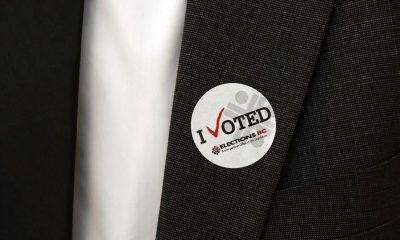Beats Studio 3 Wireless headphones are Beats’ best model. They come in second only to Apple’s AirPods.
These over-ear headphones provide good comfort, great wireless connectivity, and excellent battery life. For noise cancelation and sound quality, you may want to look elsewhere.
The Beats Studio 3 headphones are $349 / 299 headphones. These Beats headpones do not have the same sound quality as other brands but still offer a lot that people will enjoy, such as good noise-canceling technology and over-ear fit for comfort on the ears.
1) Table of Contents
2) Introduction to Beats by Dre headphones
3) History of Beats by Dre headphones
4) Features and aesthetics
5) Price comparison with competitors
Best Deals For ASUS RT-AC5300 Router on Amazon (Black Friday & Cyber Monday Sales)
Design
The Beats Studio 3 Wireless headphones look similar to the Bluetooth wireless model, but there are a few differences that show if someone is an enthusiast.
Beats headphones cancel outside noise and hug the ear’s natural curves, making them look more attractive with less branding.
Our all-black headphones are a throwback to Beats’ most unobtrusive look. Those who like more extravagance can pair them with other finishes, including classic Beats red and silver or white gold.
Basically, these Beats headphones can still cause you to look like a supplementary from a rap video if that’s your desire to.
The design is not what you would expect for such an expensive pair of headphones. The majority of the frame is made out of plastic, and although the ear pads are made from synthetic leather, they still look fake when looked at up close.
Beats Studio 3 wireless headphones are well-built. Of course, if you’re a fan of real leather and aluminum or Alcantara construction, it doesn’t matter much what the Beats look like.
Despite the fact that there is a slight creaking of plastic and some resistance in the fold- up hinge, which prevents it from flopping around like broken arms with regular use.
The Beats Studios 3 Wireless are also very comfortable. Oval cut-outs in the pads give enough space for some ears, and over-ear headphones such as this avoid ear fatigue problems common amongst on-ear headphones, just like the Beats Solo 3 Wireless and the brand new Beats Solo Pro.
Also Read:- 5 Best Nike Pegasus 34 Shoe: How Good Is It? Black Friday & Cyber Monday 2021
Connectivity and battery life
Apple’s W1 Chip is probably the biggest change in Beats Studio 3 Wireless. The W1 chip eliminates any issues with connecting your headphones when you start using an iPhone or iPad for the first time.
Turning on the Beats Studio 3 Wireless will display a pop-up prompt that you can tap to pair. iOS 13 makes it easier to reconnect track-based Bluetooth headphones.
Previous to the introduction of their Studio 3 Wireless headphones, Apple implemented the H1 headphone chip in its new AirPods Pro and Powerbeats Pro.
The H1 chip continues to be on point though, but it’s a bummer you cannot see the battery % from your phone app.
Battery life is fantastic. With all features on, you’ll get around 22 hours of battery life – but if you switch off noise cancellation, the Studio 3 Wireless can last for up to 40 hours (fab!).
This again has a 5-LED power indicator to let you know when they’re running out of battery.
As is the case for most true wireless headphones, performance across Apple and Android devices was near-perfect.
The left cup can be used for Androids and iPhones. The central Beats logo button is usually play pause, but with multiple taps you can change music tracks. Beats has sensibly avoided superfluous gestures or capacitive controls. They re usually fiddly and rain can stop some working.
Also Read:- 5 Best Adidas Falcon Shoe On Amazon Black Friday Cyber Monday 2021
Noise cancelation
Pure ANC (Active Noise Cancelation) is another tweaked feature of the Beats Studio 3 Wireless. The Studio series has already established active noise cancellation since 2014, but this new version claims to place a supplementary layer of smarts between noise as well as your ears.
It is, seemingly, made to avoid distortion due to the cancellation of louder sources. We’ve heard such distortion in pairs from less experienced noise-canceling headphone makers when taking the London Tube, standing next to the entranceway, but have heard any sounds like that from these Bose Quiet Comfort 35s.
There are a lot of reasons why ANC headphones don’t sound decent, but one major issue is wind noise. That’s the whistling and hissing that accompanies your NC attempts to suppress external noise, which only make matters worse. The Beats Studio 3 Wireless headphones are slightly more susceptible to wind noise than some, but this is true of most ANC (Active Noise Cancellation) headphones.
The Beats Studio 3 Wireless headphones have great noise cancellation, but the Bose QuietComfort 35 is even better.
The car horns still honk, the sounds of traffic don’t ebb to a light whoosh and it doesn’t detach sound like Bose’s does. However, this is enough that you need to crank up the volume in noisy environments.
Pure ANC leaves the Beats Studio 3 Wireless passive lower-mid frequency noise bed. Some active noise cancellation headphones appear to be digital tinnitus, but the Beats Studio 3 is similar to a record player regarding this background noise.
Beats has marketed Pure ANC to sound much better than almost anything on the market. It isn’t, but it’s pleasantly serviceable for a $330 headphone.
Sound quality
At the same price, you can get more of the type of sound you desire. Sure Beats Studio 3 Wireless will look great sitting comfortably on your dresser in your hotel room because they’re so stylish but they might not go over well with favorite music style preferences.
Beats Studio 3 Wireless headphones come with a lot of basses, but they maintain an elegant tone.
The Studio 3 Wireless has a unique sound signature that makes the mids come forward, creating key elements in a mix seem closer to your ears.
One potential surprise of the Beats Studio 3 Wireless is the relatively conservative low or sub-bass sound. The Sennheiser Momentum 2.0 and Plantronics Backbeat Pro 2 are more aggressive here, making kick drums stick out and appear better.
The Beats Studio 3 Wireless headphones are more prevalent in Starbucks than they are at the club.
These headphones have a different bass emphasis. It’s more a thickness in higher bass and low mids and not as much of that sub-bass gut punch.
Podcasts are not supported by a bass vibration but the human voice still sounds rich.
Switching to vocal-lead music, like Leonard Cohen and such, you will experience how this plan is not perfect. Certain elements of Beats Studio 3 Wireless low-mids can sound saturated so they appear wet cardboard with no texture.
This gumming up of the sound makes music sound muddy and hard to distinguish. It may also seem resonant with certain tones, which is unpleasant to hear.
We heard this problem before in Beats headphones and noted how it makes the soundstage seem to be constricted, even though they’re centered, not at the top and bottom.
Beats Studio 3 Wireless sound better in one important respect, but the Urbanista Seattle are almost as good at a much lower price.
The sound is also slightly muffled at the higher frequencies, albeit to a lesser degree.
Also Read:- 5 Best Bushnell Binoculars Review Black Friday & Cyber Monday 2021
Verdict
The Beats Studio 3 Wireless is great if you re not too picky about audio and want a headphone that looks good, are comfortable, and also sounds decent while releasing the pressure of city life with active noise cancellation.
Add great battery life and an Apple W1 chip to these headphones, and it’s hard not to get on with the cans. Particularly if you have an iPhone.
However, there are some bass-heavy issues you don’t hear in other headphones at the purchase price. It’s not heavy bass, but more like a blubbering sound that sits on top of every song {bet

























